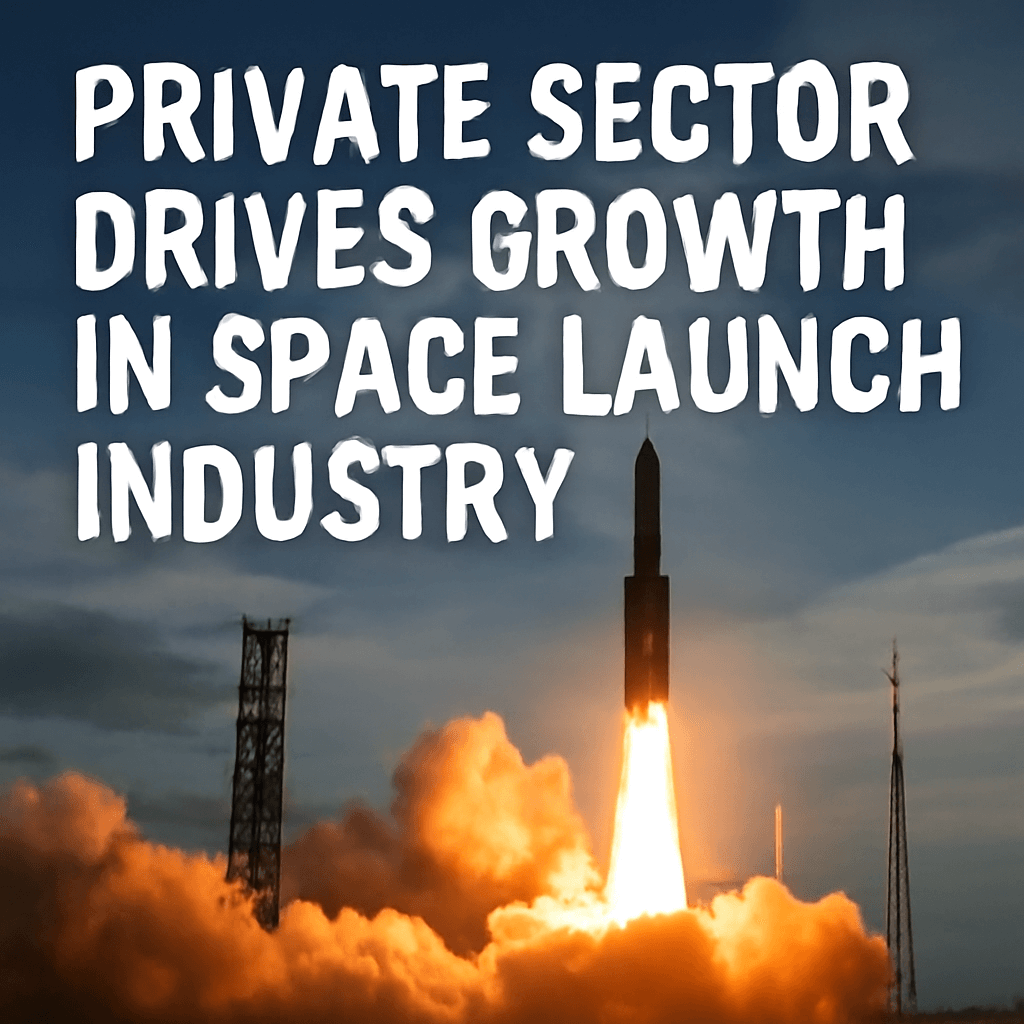Private Sector Drives Growth in Space Launch Industry

When I relocated to Florida, I anticipated sunshine, beaches and zero state income tax. What I didn’t foresee was the state’s thriving role as a global launch site—one that nearly convinced me Earth was under alien attack when I first witnessed a rocket ascending into the sky.
Driving north on Florida’s Turnpike one evening, I spotted a luminous arc cutting across the horizon. Hovering momentarily, it was too large and deliberate to be an aircraft. My mind raced through scenarios: stealth bomber, foreign missile, extraterrestrial incursion. Then I recognized the telltale plume and trajectory of a SpaceX Falcon 9.
Florida’s Historic Launch Corridor
Since the dawn of the Space Age, Cape Canaveral and the adjacent Kennedy Space Center have served as the United States’ primary launch hubs. NASA’s Mercury, Apollo and Space Shuttle programs cemented the region’s legacy, but until recently, governmental agencies monopolized orbital access.
- First government launch: Explorer 1 in 1958.
- Average cost per kilogram to LEO in 2000s: $20,000.
- Annual launches from Florida (2023): Over 140 by private and public entities.
“We’ve gone from a few dozen launches a year to hundreds, thanks to reusability and competition,” says Dr. Claire Anderson, senior analyst at Orbital Insight.
From Government Monopoly to Private Sector Surge
Just two decades ago, sending hardware into orbit cost more than $1 billion per mission and was tightly controlled by national space agencies. Today, private companies operate alongside NASA and the U.S. Space Force, launching rockets with a frequency and flexibility once thought impossible.
In 2023, SpaceX conducted 138 orbital missions—more than any national space agency in history. Rocket Lab, Blue Origin and United Launch Alliance (ULA) contributed dozens more, while emerging players in Europe and Asia added to the global tally.
Key Drivers of Growth
- Reusability: Falcon 9 first-stage boosters have been reflown up to 17 times, reducing per-launch marginal cost by 50–70%.
- Economies of Scale: Starlink and OneWeb satellite constellations justify high launch cadence and bulk pricing.
- Modular Design: Standardized payload adapters and fairings cut integration time from months to weeks.
Technical Highlights of Modern Launch Vehicles
The current generation of rockets combines advanced propulsion, digital avionics and rapid turnaround capabilities:
- Falcon 9 Block 5: Two-stage rocket with nine Merlin 1D+ engines (each producing 845 kN thrust at sea level). Payload to LEO: ~22 metric tons. Launch cost: ~$62 million.
- Starship/Super Heavy: 33 Raptor engines (combined sea-level thrust >17 MN). Projected LEO capacity: 100–150 t per flight. In-development, aiming for full reusability.
- New Glenn (Blue Origin): Two-stage, liquid oxygen and methane. Payload to LEO: 45 t. First flight targeted in 2024–2025.
- Vulcan Centaur (ULA): Dual BE-4 engines, advanced Centaur upper stage. Payload to LEO: 27 t. Designed for national security and commercial missions.
Cost Declines and Economic Impacts
Improvements in manufacturing, flight-proven hardware and larger manifest volumes have driven launch costs down by over 90% since the early 2000s. Citigroup projects an all-in cost as low as $33 per kilogram by 2040, potentially unlocking trillions in economic value.
The Expanding Space Economy
Satellites and space-based services now permeate multiple industries:
- Agriculture: Remote sensing for soil moisture and crop health, improving yield by up to 20%.
- Disaster Response: Near–real-time fire mapping and flood monitoring from low-Earth orbit constellations.
- Logistics & AI: Geospatial analytics optimizing routes; AI models trained on orbital imagery.
- Finance: Alternative data from satellite imagery, such as retail parking-lot traffic forecasts.
Emerging Commercial Applications
Beyond traditional satellites, novel ventures are taking shape:
- In-Orbit Servicing: Companies like Northrop Grumman’s Mission Extension Vehicle perform satellite refueling and repairs.
- Space Manufacturing: Zero-gravity production of advanced pharmaceuticals and fiber optics.
- Broadband Constellations: Starlink (SpaceX) and Kuiper (Amazon) targeting global internet coverage with thousands of small satellites.
Regulatory and Environmental Considerations
The rapid launch cadence raises questions about orbital debris, frequency coordination and environmental impact:
- Space Traffic Management: The U.S. Federal Communications Commission (FCC) and National Oceanic and Atmospheric Administration (NOAA) require collision-avoidance plans and deorbit strategies within 5–25 years of mission end.
- Environmental Footprint: Methane-fueled Raptor engines emit fewer particulates than kerosene but still generate atmospheric effects at high altitudes.
- International Coordination: The U.N. Committee on the Peaceful Uses of Outer Space (COPUOS) is drafting guidelines for sustainable orbital operations.
Risks and Challenges Ahead
While the outlook is bullish, key hurdles remain:
- Technical Risk: Starship’s first orbital test in April 2024 ended in an upper-stage anomaly. Full reusability engineering is still in validation.
- Market Saturation: Over 30,000 satellites planned, heightening spectrum congestion and collision probability.
- Financing Pressure: High-interest rates in 2023–2024 slowed venture capital, though Space Capital still reported $9 billion into space startups last year.
Looking Ahead: The Next Decade
Major institutional players are aligning with private firms:
- The U.S. Space Force has requested $30 billion for fiscal 2025 to protect GPS, communications and early-warning assets in orbit.
- NASA’s Artemis program aims to return humans to the Moon by 2026, contracting SpaceX and Blue Origin for landers and cargo vehicles.
- Public–private partnerships, such as NASA’s Commercial Crew Program, demonstrate cost savings of over 40% compared to sole-agency missions.
Conclusion
The privatization and commercialization of space access have transformed it from a government monopoly into a competitive market. As launch costs plummet and reusable technologies mature, new industries—from in-orbit manufacturing to advanced Earth observation—will reshape global markets. Investors who understand these trends may find themselves at the forefront of a multi-decade boom.
Editor’s Note: We welcome reader feedback. Please email your comments or topic suggestions to insights@yieldradar.info. Your name will remain confidential unless you grant permission to publish.